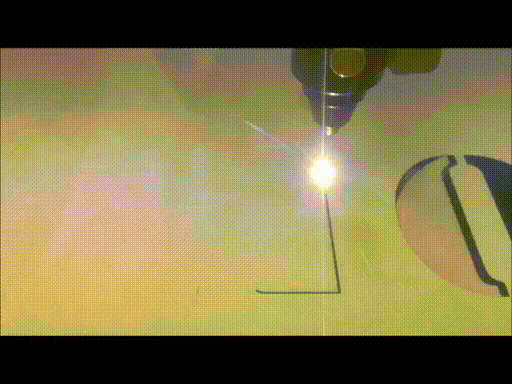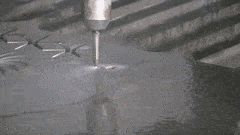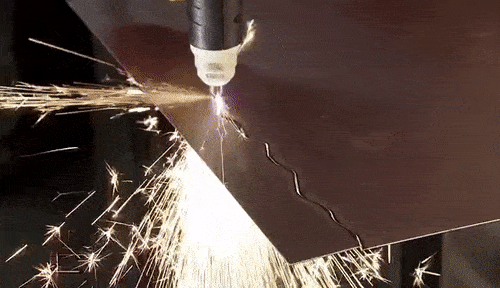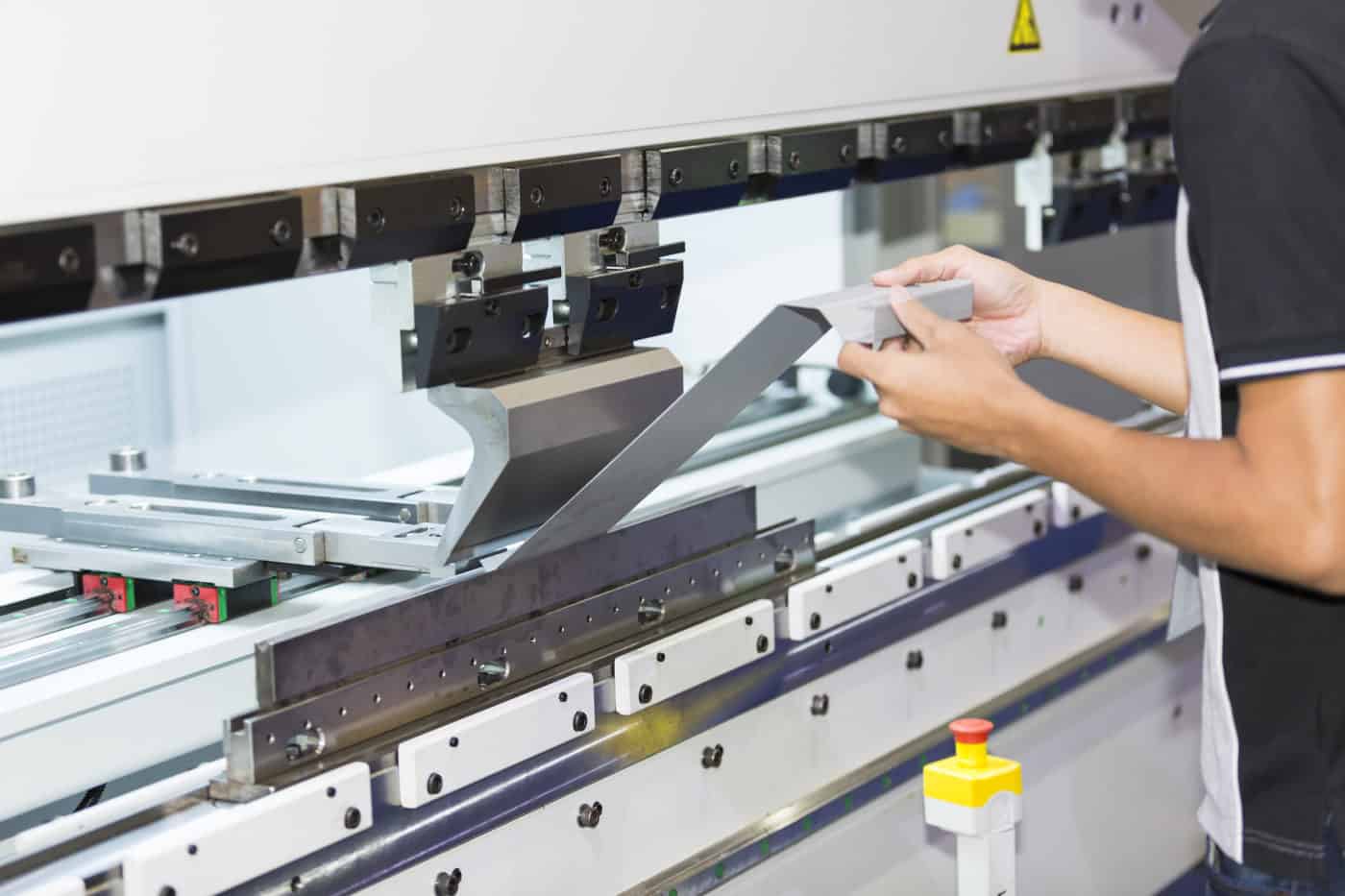钣金加工是一种将金属平板(厚度通常在 0.15 毫米至 10 毫米之间)制成各种形状的部件和结构的工艺. 这种工艺的原料是平整的金属板。金属板加工用于制造诸如外壳、机箱、支架、冲压部件、卷曲等物体。它也用于装饰目的,可以在金属板上制作各种图案。
如何进行钣金加工?
从原材料到最终产品的过渡通常需要以下三个过程中的一个或多个:材料去除(切割)、变形和装配。如果需要执行所有这些过程,通常会按照时间顺序进行。
材料去除
这涉及切割原材料以获得所需的形状。为了确保最大的精度、速度和效率,通常会使用数控水刀、等离子和激光切割技术。在一些情况下,电火花加工(EDM)也可能是一个选择。
激光切割
激光切割利用高密度激光束直接照射工件,通过熔化、蒸发或燃烧的方式精确切割材料。激光切割机广泛应用于切割、打孔和雕刻领域。常见的三种激光器类型包括CO2(二氧化碳)、Nd(钕)和Nd:YAG(掺钕钇铝石榴石),它们各自在切割技术中具有不同的优势和适用范围。
CO2激光器具有高能效和高功率输出比,主要用于切割薄材料、雕刻和打孔。Nd激光器虽然能量高,但重复效率较低,适用于雕刻、打孔和焊接。Nd:YAG激光器功率输出非常高,可以切割较厚的材料,但是其运行成本比CO2激光器更高。

激光切割机可用于铝、钢、铜、不锈钢等金属的加工。它们最适合于切割薄工件(铝最大厚度为15毫米,钢为6毫米)、雕刻和打孔。
水射流切割
在水射流切割中,使用喷嘴将高压水流聚焦在工件上进行切割。对于相对软的材料如橡胶和木材,仅使用水。而对于金属等硬材料,则使用水和磨料颗粒的混合物进行切割。

水射流切割可以切割各种厚度的材料。能够切割的最大厚度取决于材料的类型。在所有的数控切割方法中,水刀切割的精度最高,公差在0.05毫米到0.1毫米之间。其高精度的一个原因是,与等离子和激光切割不同,水刀切割不会产生热量,因此在工件中没有热影响区。
水射流切割非常灵活,可以用于切割硬材料如铝、钢、铜、不锈钢和其他金属合金,也可以用于切割较软的材料如聚合物、弹性体、木材和泡沫。
等离子切割
等离子切割通过向气体施加热量和能量将其转化为等离子体。然后使用惰性气体或空气加速热等离子体从切割喷嘴喷出,作用于工件上。等离子体与工件形成电弧,使其熔化和切割。作为一种电学过程,等离子切割只能处理电导性材料。

等离子切割机可以切割非常厚的材料,例如铝可达300毫米,钢材可达200毫米,公差为0.2毫米。使用等离子切割机还可以处理不锈钢、铜和其他金属合金。根据所需部件的复杂程度,可以选择使用2轴或3轴切割机。
虽然等离子切割机不如水刀和激光切割机那样多样化和精确,但对于厚电导金属部件来说,它们是最佳选择,因为在切割此类材料时速度更快,成本效益更高。
变形
这个过程是通过控制施加力量来弯曲或形成金属板材成所需的形状。变形过程包括使用模具、液压和电磁制动器进行弯曲、成型、冲压和拉伸。

装配
这是将各种加工过的工件组合在一起形成最终产品的过程。装配过程包括焊接、钎焊、铆接,有时也包括使用粘合剂。
材料
这个工艺最适合使用的金属包括铝及其合金、钢、铜及其合金,以及不锈钢。以下表格列出了用于钣金加工最流行的金属等级。
| 铝 | 铜 | 不锈钢 | 钢 |
| 铝 1050P 铝 1100P 铝合金 1050 铝合金 1100 铝合金 5020 铝合金 5052 铝合金 5083 铝合金 6082 | 锌白铜 洋白铜 H62铜 | SUS 301 SUS 303 SUS 304 SUS 316L | Q235 Q345 电解镀锌钢板SECC 冷轧板SPCC 镀锌板SGCC |
后处理操作
在钣金加工中,常见的后处理操作包括喷丸处理、阳极氧化、粉末涂层和涂漆。对于变形或焊接的材料,会进行热处理以消除残余应力。
钣金加工的优点
钣金加工的优点如下所示。
- 耐用性:该工艺能够生产出高度耐用的产品,无论是用于原型制作还是最终使用。
- 可扩展性和成本效益:无论您需要单件一次性部件还是大批量生产,钣金加工都能提供快速且具有成本效益的解决方案。
- 材料选择:这种加工方法可以处理多种金属,您可以从数百种具有不同优良特性的金属中进行选择。
- 快速周转:使用数控技术进行钣金加工,使得该工艺既快速又高效。
使用钣金加工的行业
任何需要使用金属部件的行业都可能会涉及钣金加工。以下是一些使用该工艺的行业:
- 机械制造
- 工程和设计
- 金属加工
- 电子
- 家具和城市基础设施
- 机器人
- 医疗和保健
- 汽车
- 乐器
- 土木建筑
结语
在Xometry择幂科技,我们提供高精度、快速且优质的钣金加工服务,可制作铝、钢、铜合金等各种钣金部件。通过使用数控激光切割、等离子切割、水刀切割等自动化切割技术,以及变形和装配技术,我们能够保证成品的高精度和高质量。
此外,我们还可以根据您的需求进行后处理。如需获取即时报价,请将您的模型上传至我们的实时报价引擎。